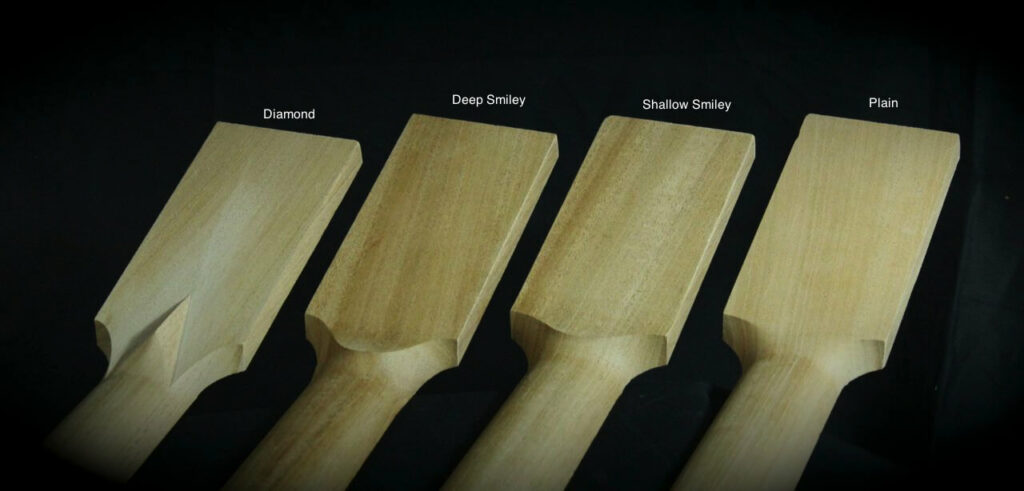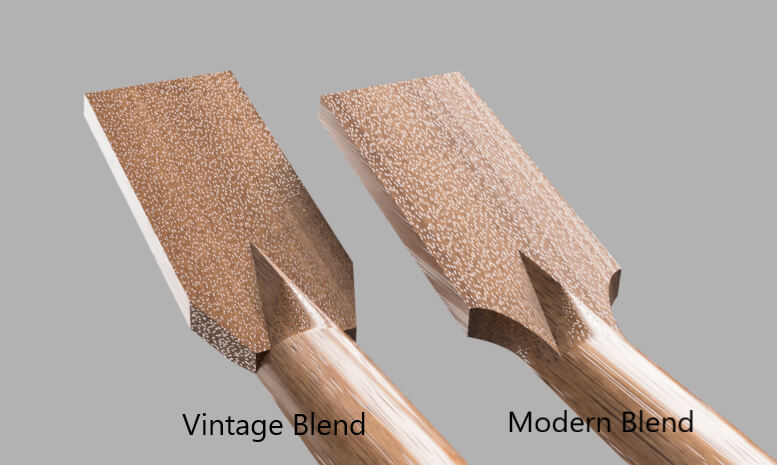This document contains a descriptions of all of the specifications and dimensions found on Birkonium neck drawings. Where possible, there’s a letter on the specification to help find that parameter on the drawing.

A) Scale Length – This is the actual scale length of your instrument.
B) Nut to Join Fret – This is a reference dimension showing the length of the neck from the front of the nut to the join fret. This is also how you can tell what the join fret of the neck is.
C) Nut Thickness – This describes the thickness of the nut. Some necks are designed to have the nut sitting on the headstock rather than the fretboard surface and in those cases, this dimension is missing
D) Nut Width – The nut width is a very important dimension which along with the width at the 12th fret is what defines the taper of the neck. It’s also worth noting that we model and program our necks to be 0.040” wider than specified to leave room for manufacturing tolerances and ensure the neck has a minimum width. E.g. a common neck taper is to have it 1-3/4” at the nut and 2-1/8” at the 12th fret. This would be shown on the drawing as a nut width of 1.790” and a 12th fret width of 2.165”
E) Width at 12th Fret – The second parameter used to determine the taper of the neck. Industry, Birkonium included, typically measures this at the 12th fret but we are able to make custom necks with the taper specified at a different fret
F) Headstock Width – The width of the headstock. We generally program our necks for a 3” wide paddle head type headstock but they may be up to 1/16” narrower than 3” due to sizing of commercially available neck blanks
G) Volute Type – Diamond, Smiley, Deep Smiley or Plain

G) HeadStock Blend – In the case of diamond volute headstocks, we provide both a modern style smooth transition from the shaft of the neck to the headstock and a ‘Vintage’ style transition. Vintage style makes binding the headstock much easier and provides a vintage look

H) Headstock Thickness and lenth – Self explanatory. Slothead necks require a thicker headstock than non-slothead necks. Slothead type necks can be tapered and slotted by Birkonium
I) Neck Thickness at 1st Fret – this defines the taper of the thickness of the neck and is typically a personal preference. Some like thicker necks, some like thinner necks
J) Neck Thickness at 9th Fret – Second dimension which determines the taper of the thickness of the neck. In the case of most 12 fret necks, the location of the 9th fret is actually within the heel transition area. In this case, it represents a virtual thickness as if there were no heel.
K) Section A and Section B – These two images are ‘slices’ of the neck taken at approximately the 1st and 9th fret. Also what we call in guitar making the ‘profile’ of the neck (in industry, what we as guitar makers call the ‘profile’ is actually the ‘section view’ in technical terms. This is where you can see if the neck has an oval, Vee, or other ‘profile’.
L) Heel Height – Measured from the fretboard gluing surface to the tip of the heel. Typically programmed to 3.9” but may be a up to 0.25” shorter.
M) Neck Angle – This is the angle between the neck and the guitar body – typically 1.5°.
N) Heel Endcap Length – For reference
O) Heel Endcap Width – For reference
Neck/Body Join Type – All Birkonium necks can be ordered with the following neck/body joint types”
- No machining – in this case the heel itself is machined but 0.6” of material is left at the heel for you to cut your own joint – tenon, dovetail or however you like. This is how the necks come right off the machine
- Tenon – We machine a 0.6” deep by 0.740” wide tenon. Length of the tenon is proportional to the length of the heel so it ‘makes sense’
- Dovetail – we machine a traditional style dovetail
- Butt Joint – We machine off all excess material from the heel
Truss Rods – All Birkonium necks have the following two options for truss rod slots
- “Straight through” truss rod which is a ¼” slot cut clear through the neck from headstock to heel with a depth of .4”
- “Two Way’ truss rod – this is a slot cut from the heel to between the nut and first fret that accepts a two-way adjust truss rod. This slot type has a wider portion at the heel to accept these sorts of truss rods. We recommend this style and have these types available for sale.
- Certain vintage style necks also have a Vintage T-bar style truss cut available.
Customization – The pre-designed necks we offer at Birkonium are a result of having made thousands of custom necks over the years. If there’s something that’s not quite right for your application, please send us a note. Most likely, we will be able to customize the neck to meet your needs exactly.
